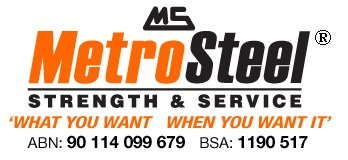Steel is one of the most commonly used metals in the world today. It’s cheap, durable and incredibly versatile and with worldwide production running at around 750 million tonnes per year it probably comes as no surprise that steel is actually the second most mass-produced item after cement.
But that’s not the best thing about steel. In addition, it’s completely recyclable and requires little energy to produce it. As a result of the switch to steel from other metals in the mid-1960s carbon dioxide emissions and energy consumption are less than half of what they were. Ultimately, this makes steel both environmentally-friendly and sustainable.
So now you know just how good steel is as a product, I guess the next question to answer is how is steel made?
Let’s take a closer look…
The Ingredients
The key ingredients used in the steel making process consist of coke, limestone, iron ore and/or scrap metal depending upon the type of furnace process. This can either be via a blast furnace where steel is produced from iron oxides – typically iron ore mixed with coke and limestone or alternatively, an electric arc furnace (EAF) where scrap steel is predominately used.
Let’s take a closer look at these two methods
Blast furnace
Modern blast furnaces are large steel cylinder-shaped shells which are lined with heat-resistant bricks. A mixture of coke, limestone and iron ore are fed in from the top. As they heat up they gradually sink down to the bottom getting hotter as they descend where temperatures can reach 3000 degrees Fahrenheit. By the time the red hot liquid hits the bottom, it separates into pure steel which floats to the top and the heavier molten slag which sinks to the bottom. The pure steel can then be drained off via a tap hole.
Electric Arc Furnace
Although the EAF process is mainly used to produce speciality steels, it can also be used to good effect to make standard non-alloy steels. For this process and unlike blast furnaces that utilise molten iron ore, here, EAF’s utilise recyclable or scrap steel to make a new steel product.
When the scrap steel is placed into the furnace a lid is closed and powerful electrical currents are produced which generate a great amount of heat – heat that is hot enough to melt the scrap and turn it back into a liquid. Once the scrap is melted, Ferro-alloys are added to ensure the steel has its desired chemical composition. Next, oxygen is blown through the furnace to purify the steel. Lime is also added at this stage to bond with any impurities which, in turn, causes them to sink to the bottom the pure steel which remains on the top and can then be easily drained off.
Other products like carbon, chromium and nickel can also be added to make specialised steel products used in a wide variety of roles. These include armour plating, engineering and manufacturing to name but a few.
So there you have it. Next time someone asks you how is steel made? you’ll able to tell them.
Here at Metro Steel we take steel and other metals and turn them into fabricated products for a wide variety of uses. We’re metal experts and have been providing fabricating services to the local community since 2005. So if you have a fabrication project you need help with, we can help. Call us on 07 3204 1000 or contact us online to discuss how we can help you.
 Talk to an Expert (07) 3204 1000
Talk to an Expert (07) 3204 1000 Working Hours - Mon – Fri 7:00 AM – 4:00 PM
Working Hours - Mon – Fri 7:00 AM – 4:00 PM